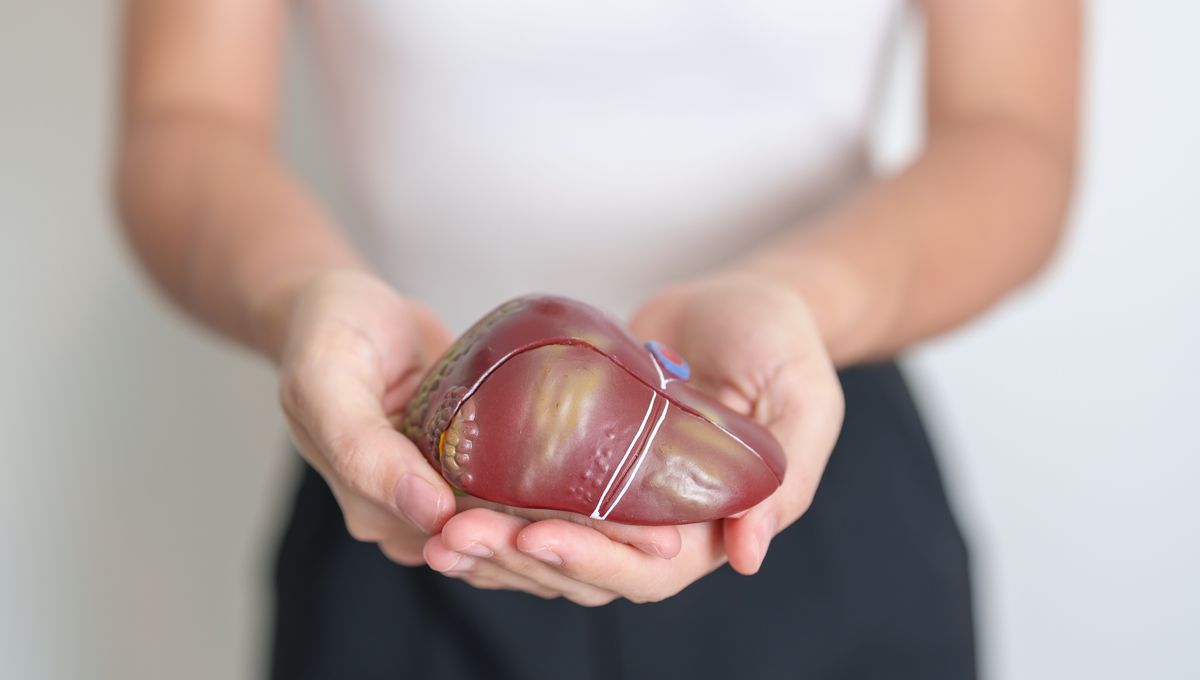
The liver is one of the human body’s most impressive organs, able to regenerate itself even after it’s damaged or a bit of it is lopped off – but its abilities can only be pushed so far. Long term, excessive alcohol use can stop it from being able to heal itself even after someone stops drinking, and in a new study, researchers have now determined why, down to the molecular level.
“We knew that the liver stops functioning and stops regenerating in patients with alcohol-related hepatitis and cirrhosis, even when a patient has discontinued consuming alcohol, but we didn’t know why,” said University of Illinois biochemistry professor Auinash Kalsotra in a statement.
“The only real life-saving treatment option once a patient reaches the liver failure stage in those diseases is transplantation. But if we understood why these livers were failing, maybe we could intervene.”
To find out what was going on, a team co-led by Kalsotra and Duke University hepatologist Professor Anna Mae Diehl examined and compared samples taken from healthy livers with those affected by alcohol-associated hepatitis (inflammation of the liver) or cirrhosis (scarring of the liver).
What they discovered was that, in the diseased livers, damaged cells were stuck in a kind of limbo between being damaged and entering a regenerative state.
In healthy livers, cells that need to regenerate revert to fetal-like progenitor cells, which then multiply before reverting to functional “adult” cells once again. The alcohol-associated diseased cells were trapped at the beginning of this process.
“They are neither functional adult cells nor proliferative progenitor cells. Since they are not functioning, more pressure builds on the remaining cells. So they try to regenerate, and they’re all ending up in this unproductive quasi-progenitor state, and that’s what is causing liver failure,” said graduate students Ullas Chembazhi and Sushant Bangru, the co-first authors of the study.
But what was causing this to happen? The team zoomed in further, investigating the differences between healthy and diseased samples on a molecular scale – that meant looking at RNA and proteins, as it’s a change in the pattern of gene expression that controls the shift to the regenerative state and back again.
When genes are expressed, DNA is transcribed into molecules called messenger RNAs (mRNAs), which are responsible for carrying the instructions to make a protein to the ribosomes (the cell’s protein-building machines). Before protein production happens, parts of the newly made mRNAs are cut out, known as splicing.
Kalsotra and Diehl’s team discovered that in diseased cells, the splicing process goes awry, causing the protein the mRNA encodes to end up in the completely wrong place, affecting the shift to regeneration.
“Proteins function at a very specific place in the cell, and that is directed by sequences within the protein that take the protein to that particular spot. We found that, in many cases, the sequence that dictates where the protein localizes within a cell was misspliced. That’s why it was important that we did the multiple analyses we did,” Kalsotra explained.
“There was the same amount of RNA and protein, but the protein was not at the right place to function. Due to missplicing, key proteins that are required for productive liver regeneration were getting stuck in the cytoplasm, when they needed to be in the nucleus.”
The team found that the splicing-gone-wrong appears to be driven by a deficiency in a protein that binds to mRNA to splice it, its production and activity dampened down as result of the inflammation triggered in alcohol-associated liver diseases. The good news is that with this new molecular understanding, we might also be on the way to new treatments.
“I’m hopeful these findings will become a launching pad for future clinical studies. We can use these misspliced RNAs as diagnostic markers or develop treatments that can curb the inflammation. And if we can correct the splicing defects, then maybe we can improve recovery and restore damaged livers,” Kalsotra concluded.
The study is published in Nature Communications.
Source Link: Too Much Alcohol For Too Long Can Stop Liver Healing, Even After Quitting – Now We Know Why